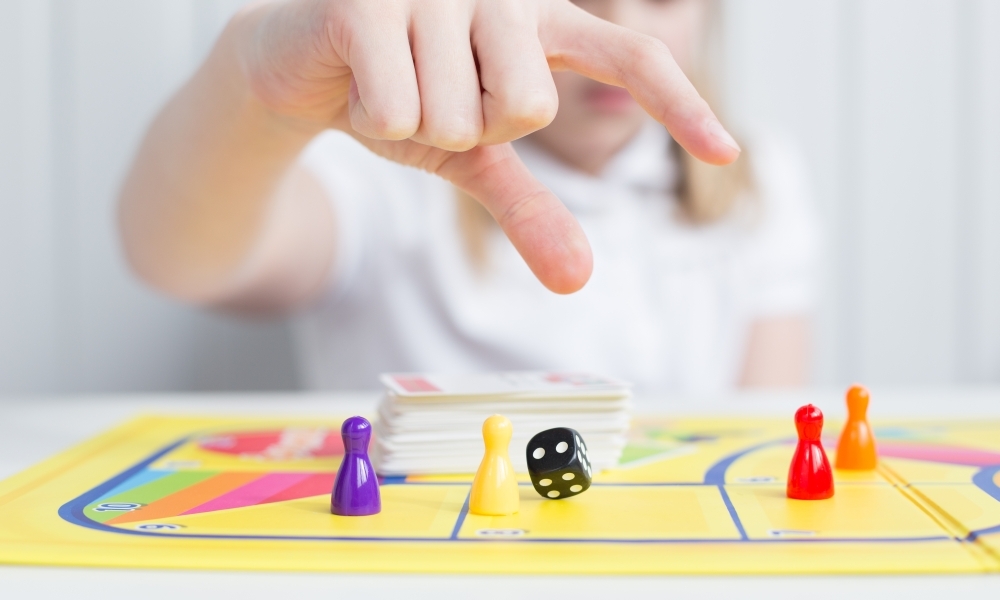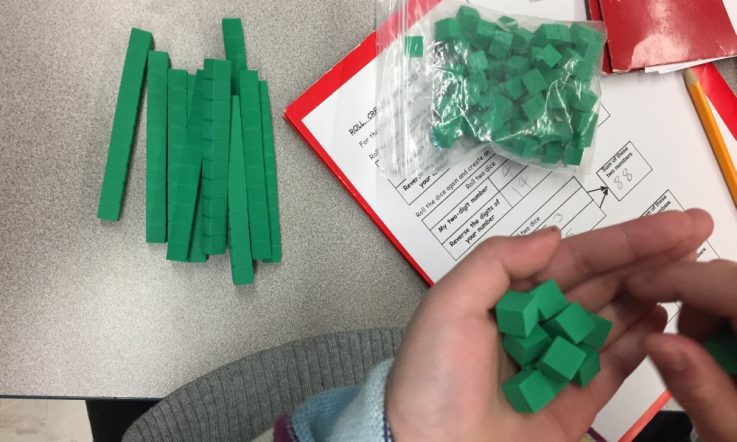‘Children with dyscalculia lack basic number sense, which affects every aspect of their ability to process numbers including performing arithmetic operations, understanding fractions and algebra.’ Rachel Parker, Senior Research Fellow at the Australian Council for Educational Research, gives an introduction to the neurological condition dyscalculia, including the signs, diagnostic tools and evidence-based ways to support students.
‘So, if you had 20 dollars and you spent 14, how much do you have left?’ said Isla’s mother. ‘I don’t know!’ shouted Isla, who was in Grade 3. ‘Stop asking me these stupid questions!’ she said, grabbing the notes from her mother’s hand and running to her room.
This may be a familiar scenario to some parents, whose children report disliking or being ‘bad at maths’, however, there may be more here to unpack. It is possible that Isla has a specific neurological condition that prevents her from perceiving numbers in the same way as other children, called dyscalculia.
What is dyscalculia?
For most children, number sense is innate. Even young babies have been observed demonstrating signs of interest when the quantity of sounds and objects they have heard and been shown changes (Izard et al., 2009). Further, researchers have found that animals appear to be pre-wired to compare two sets of objects and determine which is greater (Nieder, 2021). Neuroscientists have identified that this discrimination of different group sizes is mapped in the parietal lobe of the brain, which is just above the left ear (Nieder & Dehaene, 2009).
Children who have been diagnosed with dyscalculia, however, do not have an innate sense of number.
Dyscalculia is a condition that affects the ability to acquire arithmetical skills. Dyscalculic learners may have difficulty understanding simple number concepts, lack an intuitive grasp of numbers, and have problems learning number facts and procedures. Even if they produce a correct answer or use a correct method, they may do so mechanically and without confidence (DfES, 2001, p. 2).
Dyscalculic children do not immediately associate numeric symbols with the quantity they represent. For example, a student without dyscalculia might approach the problem 6 + 7 as 6 + 6 = 12 and then add 1 to arrive at 13. For a child with dyscalculia, 6 and 7 are merely symbols to add using any strategy they have learnt, including starting from 6 and adding the 7 on their fingers, or starting from 7 and adding 6 in single digit increments. Some may even start back at 1 before counting to the initial 6.
In summary, dyscalculic children’s lack of basic number sense impacts on every aspect of their ability to process numbers, including performing arithmetic operations, understanding fractions and algebra.
Prevalence and presentation of dyscalculia
The international prevalence rate for dyscalculia is similar to dyslexia at 8-10 per cent and it is considered just as debilitating. There are likely to be two or three students in every classroom. That means there are potentially 50 241 primary school students with dyscalculia in the Victorian education system alone (Victoria State Government, 2021), most of whom will likely progress through school undiagnosed and without specific support. These students are at greater risk than non-dyscalculic students of low self-esteem, anxiety, depression, behavioural problems, underachievement in maths, limited school participation, exclusion, and low employment prospects.
Dyscalculia is often described as the poor relation of dyslexia as it is under-researched, underdiagnosed, and largely untreated.
Signs of dyscalculia
Researchers have found that children with dyscalculia exhibit certain behaviours that point to the trouble they experience working with numbers. Often, children with dyscalculia:
- Do not understand place value, making errors such as writing the number one hundred and two as 1002.
- Get very frustrated performing basic maths operations such as single digit addition, or playing board games.
- Count on their fingers.
- Cannot recall times tables.
- Demonstrate poor understanding of and confuse mathematical symbols such as + - / < >
- Can perform mathematical processes, but do not understand the underlying mathematical concepts and therefore do not retain the processes.
- Achieve very highly in other subjects such as English and perform very poorly in mathematics (especially if there are no other underlying issues, for example dyslexia).
- Experience difficulty telling analogue time.
How is dyscalculia assessed?
Maths learning difficulties and dyscalculia are difficult to diagnose as there is a wide range of ability in a single year level. In every class, there are children in high-, medium- and low-performing groups, and there are also children who have difficulty learning maths for various reasons (for example, related to their working memory capacity or other cognitive abilities). As mentioned above, there are likely to be children in every class with dyscalculia – accordingly, it is important for educators to be familiar with the characteristics and typical behaviours of each group.
Diagnostic tools
Children referred to the Maths Learning Difficulties (MLD) and Dyscalculia Clinic at the University of Melbourne undertake a series of tests designed to measure their core number sense. One key item measures a child’s ability to subitize; that is, perceive the quantity of a small array of dots without counting them individually. Children with dyscalculia generally have a very small (or absent) subitizing span and are more likely to start counting smaller quantities of dots than non-dyscalculic children. Many children with dyscalculia will start counting at 2 (see Figure 1 below).

[Figure 1: Example of dot arrays test item]
Other core number tests include symbolic number comparison (identifying which number is bigger when shown a series of two numbers side by side (e.g., 8 & 9), and number line estimations - where children are asked to plot a specific number (e.g., 246) on a line starting from 0 and ending at 1000.
The tests used by the MLD and Dyscalculia Clinic at the University of Melbourne were developed from an extensive longitudinal study of primary school students conducted by Associate Professor Bob Reeve and associates in the Cognitive and Neuropsychological Development lab in the Melbourne School of Psychological Sciences at the University of Melbourne. The measures were identified as valid and reliable predictors of dyscalculia (Reeve et al., 2012).
Evidence-based ways to support students with dyscalculia
Researchers have established that the neural connections that map quantity to symbolic forms of numbers are not established for children with dyscalculia (Butterworth, 2005). However, it is possible to create other connections between symbolic and non-symbolic forms of number which allow them to work effectively with numbers.
An evidence-based approach for supporting children with dyscalculia is called ‘Dynamic (Interactive) Assessment’ (Brown et al., 1992). It aligns with Vygotsky’s theories of the importance of social interaction to learning, and incorporates the three elements of diagnosis, assessment and intervention.
Key features of this approach are:
- Constructing mini learning progressions for each narrow maths domain (for example, word problems).
- Teachers and students collaborating, ideally one-to-one, on problem solving.
- Teachers posing open-ended questions to students (for example, ‘what comes next’, or ‘what is being asked?’ to increase student agency and ownership of their learning).
- Creating individual learning needs profiles through assessment of core number abilities, areas of cognitive strength, arithmetic, fractions and algebra abilities.
- Support to internalise the underlying mathematical concepts so the student can recall the processes.
Note that rote learning is not excluded from intervention strategies for children with dyscalculia, as it can be effective in reducing cognitive load during problem solving, depending on a student’s individual needs and strengths.
Students with a maths learning difficulty or dyscalculia have been found to improve their knowledge and skills when using manipulatives. When they play with numbers in real-world contexts, their conceptual understanding improves and they are more likely to retain the processes. Students with dyscalculia need to be cutting up paper, using blocks, coloured beads, and visual or tangible representations of number for much longer than non-dyscalculic students.
Numbers are everywhere. We now know that low numeracy affects job prospects more than low literacy (Parsons & Bynner, 2005) and that children with dyscalculia have difficulty managing money and are more at risk of school exclusion that non-dyscalculic children.
Importantly, it is possible to support children with dyscalculia to grow and achieve in maths by making small adjustments to teaching practice. The sense of accomplishment students feel when succeeding in maths has the potential to change the way they see themselves and their ability to learn in life.
I would like to acknowledge the important work of Dr Judi Humberstone in writing this article. Dr Humberstone is a former Victorian Department of Education school principal with 23 years’ experience of teaching maths at the secondary level. She is a registered psychologist and was jointly responsible for setting up the dyscalculia component of the Psychology Clinic at the University of Melbourne. Dr Humberstone also provides advice to schools and parents on how best to help students with maths learning difficulties and dyscalculia and presents at national and international meetings. See the ‘references and resources’ section below for links to some of her videos.
References and resources
Brown, A. L., Campione, J. C., Webber, L. S., & McGilly, K. (1992). Interactive learning environments: a new look at assessment and instruction. In B. R. Gifford & M. C. O’Connor (Eds.), Changing assessments: Alternative views of aptitudes, achievement, and instruction (pp. 121–211). Kluwer.
Butterworth, B. (n.d.). The Mathematical Brain. https://www.mathematicalbrain.com/
Butterworth, B. (2005). The development of arithmetical abilities. Journal of Child Psychology and Psychiatry, 46(1), 3-18.
Butterworth, B. (2019) Dyscalculia – from Science to Education. Routledge.
Department for Education and Skills (DfES) (2001). Guidance to support pupils with dyslexia and dyscalculia. (No. DfES 0512/2001). http://scotens.org/sen/resources/dyslexia_leaflet_maths.pdf
Humberstone, J. [DeafedVic]. (2019, August 9). Learning Difficulties in Numeracy – Numeracy and the Brain [Video]. YouTube. https://www.youtube.com/watch?v=aZadVfLmepo
Humberstone, J. [DeafedVic]. (2019, August 9). Learning Difficulties in Numeracy – Numeracy and the Curriculum [Video]. YouTube. https://www.youtube.com/watch?v=IVRDJdAaAvg
Humberstone, J. [DeafedVic]. (2019, August 9). Learning Difficulties in Numeracy – Characteristics of Dyscalculia [Video]. YouTube. https://www.youtube.com/watch?v=KtOvPskrI70
Humberstone, J. [DeafedVic]. (2019, August 9). Learning Difficulties in Numeracy – Classroom Assessment [Video]. YouTube. https://www.youtube.com/watch?v=W2cZA5M7S2I
Humberstone, J. [DeafedVic]. (2019, August 9). Learning Difficulties in Numeracy – Intervention Strategies [Video]. YouTube. https://www.youtube.com/watch?v=I2y5FCbsBjk
Izard, V., Sann, C., Spelke, E. S., & Streri, A. (2009). Newborn infants perceive abstract numbers. Proceedings of the National Academy of Sciences, 106(25), 10382-10385. https://doi.org/10.1073/pnas.0812142106
Nieder, A. (2021). Neuroethology of number sense across the animal kingdom. Journal of Experimental Biology, 224(6), jeb218289. https://doi.org/10.1242/jeb.218289
Nieder, A., & Dehaene, S. (2009). Representation of number in the brain. Annual Review of Neuroscience, 32, 185-208. https://doi.org/10.1146/annurev.neuro.051508.135550
Parsons, S., & Bynner, J. (2005). Does Numeracy Matter More? National Research and Development Centre for Adult Literacy and Numeracy, Institute of Education. London.
Mitchell, N. (2011, January 29). That Does Not Compute: the hidden affliction of dyscalculia. [Radio broadcast]. ABC All in the Mind. https://www.abc.net.au/radionational/programs/allinthemind/that-does-not-compute-the-hidden-affliction-of/2996350
Reeve, R., Reynolds, F., Humberstone, J., & Butterworth, B. (2012). Stability and change in markers of core numerical competencies. Journal of Experimental Psychology: General, 141(4), 649. https://doi.org/10.1037/a0027520
University of Melbourne. (n.d.). Maths Learning Difficulties and Dyscalculia Service. https://psychologicalsciences.unimelb.edu.au/psychology-clinic/maths-and-dyscalculia
Victoria State Government. (2021). Summary statistics for Victorian Schools, July 2021. Department for Education and Training. https://www.vic.gov.au/statistics-victorian-schools-and-teaching
In this article, Rachel Parker shares some of the signs of dyscalculia. Have you noticed any of these in your own students? Who could you speak to in your school about this and the next steps in terms of a possible diagnostic assessment?
If you already have students diagnosed with dyscalculia in your class, review the section of the article on evidence-based support. Which of these techniques are you using? Which will you add to your repertoire next term?



